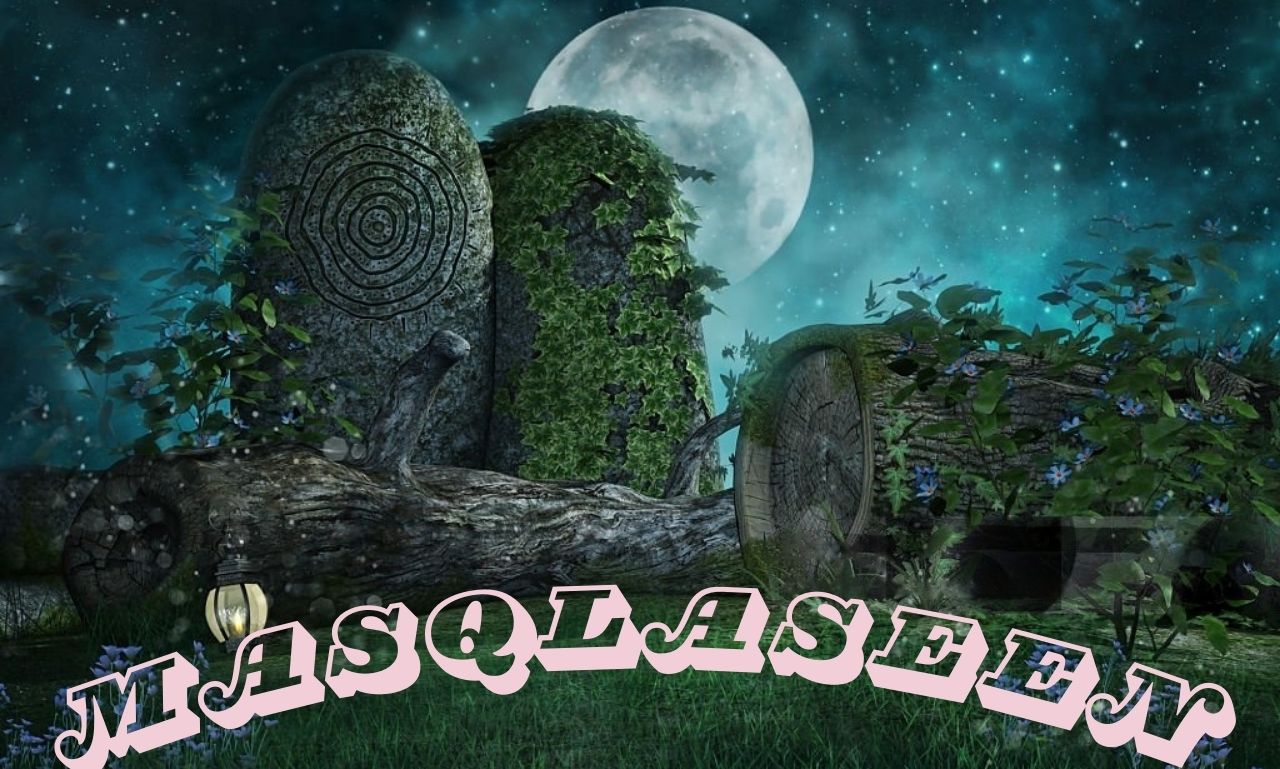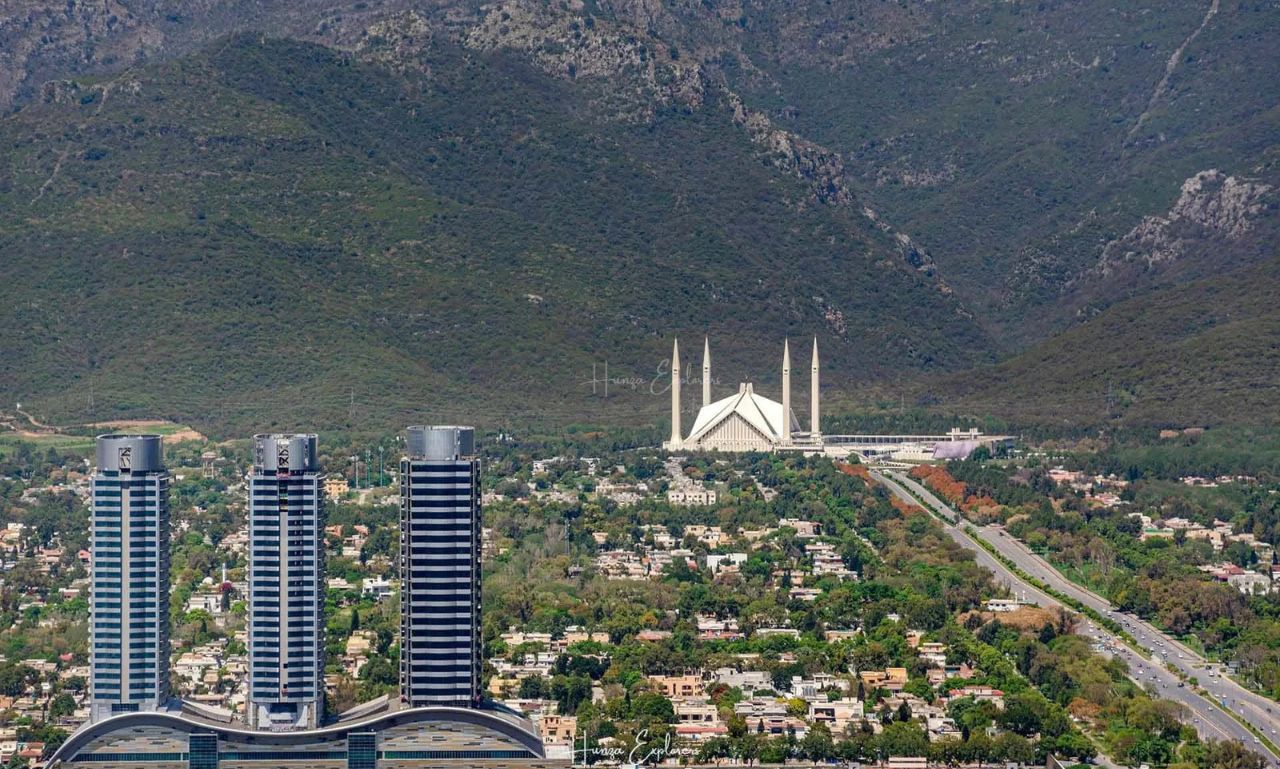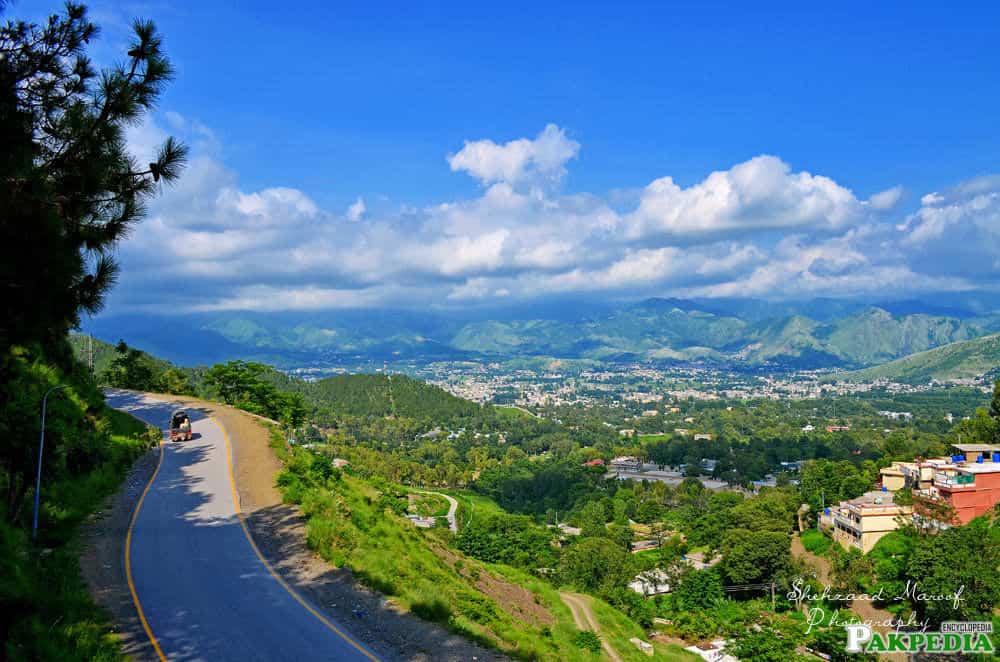Travel
Art and Music of Masqlaseen: A Celebration of Creativity and Expression
Published
8 months agoon

Masqlaseen, where art and music intertwine to create a tapestry of creativity and expression,. This mystical land is not just a place on the map but a cultural oasis where traditions blend seamlessly with contemporary influences. Join us on a journey through the rich artistic heritage and dynamic music scene that define Masqlaseen’s essence.
The Influence of Art and Music in Masqlaseen Culture
Art and music are deeply intertwined in the rich tapestry of Masqlaseen culture, serving as a vibrant expression of their heritage and values. In Masqlaseen, creativity knows no bounds; from intricate calligraphy to colorful mosaics adorning buildings, art is omnipresent. Music fills the air with soul-stirring melodies that echo stories of love, loss, and triumph.
Traditional art forms like handwoven textiles and pottery showcase the craftsmanship passed down through generations. These age-old practices continue to inspire contemporary artists who blend modern techniques with historical influences. The fusion of the past and present creates a dynamic cultural landscape where innovation thrives.
In times of political unrest or social change, art becomes a powerful tool for dissent or unity in Masqlaseen society. Artists use their creations to challenge norms, provoke thought, or simply provide solace amidst turmoil. The resilience of the artistic community mirrors the strength of the people during challenging times.
The diversity of artistic expressions in Masqlaseen is a testament to their spirit and creativity. Each painting tells a story; each melody evokes emotion; together they form a symphony that celebrates the beauty and complexity of Masqlaseen culture.
Traditional Art Forms in Masqlaseen
In Masqlaseen, traditional art forms hold a rich heritage that reflects the deep cultural roots of its people. From intricate calligraphy to vibrant tapestries, each art form tells a story of history and tradition passed down through generations.
One prevalent traditional art form in Masqlaseen is miniature painting, known for its detailed brushwork and vivid colors depicting scenes from folklore and mythology. These miniature masterpieces are often showcased in museums and galleries, preserving the essence of Masqlaseen’s artistic legacy.
Another significant traditional art form is ceramic pottery, where skilled artisans mold clay into exquisite vessels adorned with geometric patterns and symbolic motifs. Each piece carries a touch of craftsmanship that speaks to the artisan’s dedication to preserving this ancient craft.
Masqlaseen also boasts a long-standing tradition of storytelling through oral literature, where epic tales are recited with passion and flair. This immersive experience captivates audiences, transporting them to fantastical realms woven with imagination and wisdom.
The blend of these traditional art forms exemplifies Masqlaseen’s commitment to honoring its past while embracing creativity for future generations to cherish and celebrate.
Contemporary Art and Music Scene in Masqlaseen
The contemporary art and music scene in Masqlaseen is a vibrant tapestry of creativity and innovation. Artists and musicians draw inspiration from both traditional roots and modern influences, creating a unique fusion that captivates the senses.
In galleries and performance venues across Masqlaseen, you can witness the dynamic evolution of artistic expression. From experimental installations to boundary-pushing musical performances, the creative energy in this region knows no bounds.
Local artists are embracing new mediums and pushing the boundaries of conventional art forms. Street art has become a popular form of expression, with colorful murals adorning walls throughout cities, reflecting both social commentary and cultural pride.
Musicians blend traditional instruments with electronic beats, creating hypnotic melodies that transport listeners to another realm. The music scene in Masqlaseen is as diverse as it is captivating, offering something for every taste.
The contemporary art and music scene in Masqlaseen continues to flourish as artists push the boundaries of creativity while staying true to their cultural heritage.
Impact of Political and Social Climate on Creativity
The political and social climate in Masqlaseen plays a significant role in shaping the creativity of its artists and musicians. The ebb and flow of societal norms, government policies, and cultural movements all intertwine to influence artistic expression within the country.
During times of political unrest or social change, artists often channel their emotions into their work, using art as a platform to voice dissent or promote unity.
Conversely, periods of stability and prosperity may inspire artists to explore new avenues of creativity, pushing boundaries and experimenting with innovative techniques. The evolving landscape of Masqlaseen’s political and social sphere continually challenges creatives to adapt and reinvent themselves in response to external factors.
The impact of the political and social climate on creativity is undeniable in Masqlaseen – influencing not only individual works but also shaping the collective artistic identity of the nation.
Celebrating the Diversity of Expression in Masqlaseen
The vibrant culture of Masqlaseen is a tapestry woven with threads of diversity and expression. From the intricate patterns adorning traditional textiles to the melodious tunes resonating through bustling marketplaces, creativity thrives in every corner of this enchanting land.
Artists in Masqlaseen embrace a myriad of influences, blending ancient techniques with modern interpretations to create truly unique pieces that captivate the senses. Whether it’s a striking painting depicting historical events or a soul-stirring musical composition inspired by nature, each creation reflects the rich tapestry of experiences that shape the identity of Masqlaseen.
Diversity is not just celebrated; it is ingrained in the very essence of Masqlaseen’s artistic landscape. Artists from different backgrounds come together to collaborate. Exchange ideas, and push boundaries, resulting in a dynamic fusion of styles and perspectives that continuously redefine. What do art and music mean in this culturally rich society?
In Masqlaseen, diversity isn’t just tolerated;. It’s revered as an essential element that breathes life into every brushstroke and note played. The celebration of diverse expressions fosters an environment where creativity knows no bounds. Inspiring artists to explore new horizons and push beyond conventional norms to create something truly extraordinary.
Conclusion:
Masqlaseen is a vibrant tapestry of art and music, where creativity knows no bounds. The rich cultural heritage intertwined with modern influences has given. Rise to a diverse and dynamic artistic scene that continues to captivate audiences worldwide. From traditional art forms that have stood the test of time to contemporary expressions pushing boundaries, Masqlaseen celebrates the beauty of creativity in all its forms.
As we immerse ourselves in the art and music of Masqlaseen,. Let us appreciate the power of expression and storytelling that transcends language barriers. It is through these creative outlets that we can connect on a deeper level, fostering understanding and unity amidst diversity. Let us continue to cherish and support the artists who pour. Their hearts are into their craft, enriching our lives with their talent and passion.
Masqlaseen beckons us to embrace the magic of artistry and melody,. Inviting us to join in a celebration of creativity unlike any other. So let’s raise our voices in harmony with the rhythm of life in Masqlaseen. Every stroke of paint and note played carries with it a piece of soulful expression for all to behold.
You may like
Travel
Tourism: A Gateway to Cultural Exchange and Economic Growth
Published
14 hours agoon
October 23, 2024Tourism has long been a driving force behind economic growth and cultural exchange. The exploration of new places, understanding diverse cultures, and participating in leisure activities in unfamiliar environments are all essential components of tour-ism. As a key player in the global economy, tourism influences many sectors such as hospitality, transportation, and entertainment, while simultaneously promoting the cultural heritage of the host destinations. This article explores the importance of tourism, the various types of tourism, and the challenges facing this ever-growing industry.
The Importance of Tourism
Economic Impact
Tourism is one of the largest global industries, contributing significantly to the GDP of many countries. In 2019, the travel and tourism industry generated $9.2 trillion globally and supported 330 million jobs. Countries such as France, Spain, the United States, and Thailand are prime examples of destinations where tour-ism is a major economic contributor. The industry creates jobs across various sectors, from accommodation and transportation to food services and retail. Local businesses benefit greatly from tourist spending, creating a multiplier effect that stimulates the entire economy.
Moreover, tour-ism is a major source of foreign exchange, helping countries to diversify their income sources. For many developing nations, tourism serves as a critical engine for economic development, attracting international investments in infrastructure, services, and facilities. Governments often invest in airports, roads, and other forms of infrastructure to cater to tourists, which in turn benefits local communities.
Cultural Exchange and Preservation
Beyond its economic advantages, tour-ism fosters cultural exchange and understanding. Tourists, by exploring new cultures, traditions, and lifestyles, gain insights into ways of life that may be vastly different from their own. This interaction helps break down barriers, leading to more tolerance and acceptance among diverse communities. The cultural exchange inherent in tourism can also lead to the preservation and promotion of local heritage, arts, and traditions. For instance, many local festivals, craft markets, and traditional performances gain visibility through tourism, ensuring their survival in a rapidly modernizing world.
Environmental and Ecotourism
Tourism also plays a significant role in environmental conservation. With the rise of ecotourism, tourists are increasingly drawn to natural destinations such as national parks, rainforests, and marine reserves. Ecotourism promotes the idea that nature should be conserved and appreciated responsibly. Many ecotourism initiatives support conservation efforts, provide jobs for local communities, and educate travelers about the importance of protecting biodiversity. Popular ecotourism destinations include Costa Rica, Kenya, and New Zealand, where sustainable tourism practices are implemented to minimize environmental impacts.
Types of Tourism
Leisure Tourism
Leisure tour-ism remains the most popular form of travel. It includes activities such as beach holidays, cruises, city tours, and theme park visits. Whether travelers are looking for relaxation or adventure, leisure tourism offers a wide range of experiences catering to all tastes. Iconic destinations such as the beaches of Hawaii, the bustling streets of Paris, and the vibrant markets of Marrakech continue to attract millions of tourists each year.
Cultural Tourism
Cultural tour-ism is focused on experiencing the customs, history, art, and heritage of different destinations. Travelers seeking deeper connections with the places they visit often choose this type of tourism. For example, visiting ancient temples in Japan, exploring the ruins of Machu Picchu, or attending traditional ceremonies in India are all popular cultural tour-ism activities. This form of tourism promotes greater understanding and appreciation of different cultures, while also contributing to the preservation of cultural assets.
Adventure Tourism
For the thrill-seekers, adventure tourism provides excitement through activities such as hiking, rafting, scuba diving, and safaris. Adventure tourists are drawn to destinations that offer unique physical challenges and a close connection with nature. Countries like Nepal, known for trekking in the Himalayas, and Australia, famous for diving in the Great Barrier Reef, have become hotspots for adventure tour-ism. This sector often overlaps with ecotourism, as many of these activities occur in natural settings.
Medical Tourism
Medical tour-ism has emerged as a growing trend, where individuals travel to other countries to receive medical treatments or procedures. This type of tourism is often driven by the need for lower costs, better quality care, or treatments not available in one’s home country. Countries such as Thailand, India, and Mexico have become leading destinations for medical tourists due to their advanced healthcare systems and affordable prices. Medical touri-sm not only provides patients with necessary treatments but also boosts the economies of the host countries.
Business Tourism
Business tour-ism involves travel for work-related activities, such as attending conferences, meetings, or trade fairs. Although business travelers may not have much leisure time during their trips, many extend their stays to explore the destination once their professional commitments are complete. Cities such as London, New York, and Dubai are popular business tourism hubs, hosting major international events that attract thousands of professionals from around the world.
Challenges Facing Tourism
Overcrowding and Overtourism
Overtourism is one of the biggest challenges facing the tour-ism industry today. Popular tourist destinations often struggle with overcrowding, which can lead to the degradation of natural environments and cultural sites. Venice, Machu Picchu, and the Galápagos Islands are prime examples of destinations where the influx of tourists has put significant strain on local resources. In response, some governments have implemented restrictions on the number of visitors allowed, and others are promoting alternative, less-frequented destinations to distribute the flow of tourists more evenly.
Environmental Degradation
While tourism can promote environmental conservation, it can also contribute to its destruction. Large-scale tour-ism development projects, such as the construction of hotels, airports, and resorts, can lead to habitat loss, pollution, and the depletion of natural resources. Unsustainable tourism practices, such as littering, improper waste management, and overuse of water resources, can severely impact fragile ecosystems. Therefore, it is essential for both tourists and tourism operators to prioritize sustainability and adopt eco-friendly practices.
Impact on Local Communities
Tourism can sometimes disrupt local communities, particularly in cases where rapid development leads to displacement, cultural commodification, and economic inequality. In some regions, the growth of tour-ism has resulted in skyrocketing property prices, pushing out local residents in favor of luxury resorts and hotels. This can create resentment and tension between locals and tourists. To mitigate these effects, community-based tourism initiatives are being promoted, which encourage local ownership and control of tourism enterprises.
The Effects of Global Crises
Global crises such as pandemics, economic recessions, and political instability can have a significant impact on the tourism industry. The COVID-19 pandemic, for example, brought the global tour-ism industry to a standstill, with international arrivals declining by 74% in 2020. This unprecedented crisis led to massive job losses, business closures, and a sharp decline in travel demand. As the world recovers, the tour-ism industry must adapt to new realities, such as changing consumer preferences and stricter health and safety protocols.
Conclusion
Tourism is a dynamic and multifaceted industry that holds great potential for economic development, cultural exchange, and environmental conservation. While it offers numerous benefits to both tourists and host communities, it also presents challenges that need to be addressed through sustainable practices and responsible travel. By fostering a balance between economic growth, cultural preservation, and environmental stewardship, tourism can continue to thrive as a force for positive change in the world.

Introduction
Islamabad, the capital city of Pakistan, is known for its modern infrastructure, scenic beauty, and serene environment. Established in the 1960s, the city was designed to replace Karachi as the capital of Pakistan, and it represents the country’s vision of modernity and urban development. Islamabad stands out due to its organized layout, lush greenery, and its proximity to the Margalla Hills, making it one of the most picturesque capitals in the world.
History and Foundation
Islamabad’s foundation was laid in 1960 under the government of General Ayub Khan. The decision to move the capital from Karachi was driven by several factors, including the need for a central location, climate suitability, and the desire to move the capital away from the coast, reducing vulnerabilities to foreign invasion. Renowned Greek architect and town planner, Constantinos Apostolou Doxiadis, designed the city’s master plan.
Before its establishment, the area where Islamabad now stands was sparsely populated with small villages and ancient settlements. The site was selected near Rawalpindi, which served as the interim capital during the transition period.
Geography and Climate
Islamabad is located in the northern part of Pakistan, nestled against the foothills of the Margalla Hills, which are part of the Himalayan range. The city is spread over an area of 906 square kilometers and lies at an elevation of 507 meters (1,663 feet) above sea level. Its location provides residents with stunning views of the surrounding natural beauty.
Islamabad experiences a humid subtropical climate. The city enjoys four distinct seasons, with hot summers, mild winters, a rainy monsoon period, and a pleasant spring. The Margalla Hills significantly influence the weather, keeping the climate relatively cooler and more moderate compared to other cities in Pakistan, especially in summer.
City Layout and Architecture
Islamabad’s urban planning is renowned for its sector-based layout, ensuring well-organized residential, commercial, and governmental areas. The city is divided into eight main zones, including administrative, diplomatic, residential, commercial, educational, and rural areas, with sectors identified by letter and number combinations.
Each sector is self-sufficient, equipped with basic amenities such as markets, mosques, parks, and schools. Major commercial hubs include Blue Area, which runs parallel to the central sectors, and is home to offices, malls, and banks.
The architecture in Islamabad blends modernity with traditional Islamic styles. Some notable buildings include:
- Faisal Mosque: The largest mosque in Pakistan and an iconic symbol of the city, this mosque was designed by Turkish architect Vedat Dalokay. Its unique design combines modernist lines with traditional Islamic elements, creating a stunning structure that stands out against the backdrop of the Margalla Hills.
- Pakistan Monument: A symbol of the unity of the Pakistani people, this monument in Shakarparian Park represents the four provinces and three territories of Pakistan. It is shaped like a blooming flower, symbolizing the nation’s growth and unity.
Culture and Lifestyle
Islamabad is known for its calm and laid-back lifestyle. In contrast to the hustle and bustle of Pakistan’s larger cities like Karachi and Lahore, Islamabad offers a more serene environment. The city is often referred to as “the green city” due to its vast expanses of parks, forests, and tree-lined streets. Popular parks include Fatima Jinnah Park, Daman-e-Koh, and the Rawal Lake Park.
Being the capital city, Islamabad is home to a diverse population that includes diplomats, expatriates, and people from various regions of Pakistan. This diversity is reflected in the city’s culture, food, and festivals. While traditional Pakistani cuisine is available everywhere, Islamabad also boasts a range of international restaurants and cafes.
Islamabad’s cultural scene includes art galleries, theaters, and music festivals. Lok Virsa Museum and Pakistan National Council of the Arts (PNCA) are key cultural institutions, promoting local arts and heritage. The city also hosts various cultural events like the Pakistan National Folk Festival and literature festivals.
Economy and Education
Islamabad is a significant economic hub in Pakistan, especially for government services and the information technology sector. Its economy is largely driven by the federal government, embassies, and multinational corporations. The city’s IT sector is growing rapidly, with the establishment of IT parks and companies such as PTCL, Mobilink, and other software firms.
Education is another highlight of Islamabad. It is home to some of the most prestigious educational institutions in Pakistan, including Quaid-e-Azam University, the National University of Sciences and Technology (NUST), and International Islamic University. The presence of high-quality schools, colleges, and universities attracts students from all over the country.
Tourism and Attractions
Islamabad is a gateway to some of Pakistan’s most beautiful northern areas, but the city itself has much to offer visitors:
- Daman-e-Koh: A scenic viewpoint located in the Margalla Hills, offering panoramic views of Islamabad, especially at sunset.
- Rawal Lake: A man-made lake that provides a peaceful retreat for picnics, boating, and bird-watching.
- Saidpur Village: A centuries-old village at the foot of the Margalla Hills, restored to showcase traditional architecture and culture, with restaurants and cultural exhibits.
- Shah Faisal Mosque: A must-visit for tourists due to its architectural beauty and cultural significance.
Additionally, Islamabad’s proximity to Murree, Nathia Gali, and other hill stations makes it an ideal base for tourists seeking both urban and natural experiences.
Challenges and Future Prospects
While Islamabad is one of the most well-planned cities in Pakistan, it still faces challenges. Urban sprawl, rapid population growth, and the pressure on infrastructure are concerns for city planners. However, efforts are ongoing to expand the city’s facilities while maintaining its green character.
In recent years, Islamabad has seen an increase in high-rise buildings and real estate development. As Pakistan’s IT sector grows, Islamabad is becoming a hub for startups and tech companies, leading to a more vibrant economic future for the city.
Conclusion
Islamabad represents the modern face of Pakistan, blending contemporary development with the country’s rich cultural heritage. It is a city that values both progress and nature, offering a peaceful yet dynamic lifestyle to its residents and visitors. As it continues to grow, Islamabad is poised to remain a key player in Pakistan’s political, economic, and cultural landscape.
Travel
Abbottabad: A Scenic City with a Rich Historical Legacy
Published
2 days agoon
October 22, 2024
Abbottabad, a picturesque city in the Hazara region of Pakistan’s Khyber Pakhtunkhwa province, stands out for its lush greenery, pleasant climate, and rich historical significance. Situated at an elevation of about 1,260 meters (4,140 feet), the city is surrounded by the scenic Sarban hills, drawing tourists and serving as a gateway to northern areas like Naran, Kaghan, and Gilgit-Baltistan.
Historical Background
In 1853, Major James Abbott, a British officer of the East India Company, founded Abbottabad. He established it as a military cantonment and played a key role in shaping its early development. Deeply moved by the beauty of the area, Major Abbott expressed his affection for the city in a heartfelt poem, lamenting his departure. Abbottabad quickly grew in prominence as a garrison town, largely due to its strategic location.
During British rule, Abbottabad became a center for military and administrative activities in the region. Even today, the city retains its historical military significance as it hosts the Pakistan Military Academy (PMA) in Kakul, where officers of the Pakistan Army are trained. This prestigious institution is a key part of the city’s identity.
Geography and Climate
Abbottabad enjoys a temperate climate with four distinct seasons. The summers are mild and pleasant, making it an ideal summer retreat for tourists escaping the heat of the plains. Winters can be cold, with occasional snowfall, transforming the city into a winter wonderland. The city’s moderate climate and its verdant surroundings contribute to its reputation as a “city of pines” due to the abundance of pine trees in and around the area.
Abbottabad’s geographical location is a major factor in its appeal. Situated along the Karakoram Highway, the city serves as a gateway to the northern areas of Pakistan, including the stunning landscapes of the Kaghan Valley, the Karakoram mountain range, and even the challenging trek routes leading to K2, the second-highest mountain in the world. As a result, it is often used as a base by adventure enthusiasts and tourists heading to these areas.
Education and Development
Abbottabad has also established itself as an educational hub. Apart from the Pakistan Military Academy, the city is home to several prestigious educational institutions, including the Ayub Medical College, COMSATS University, and the Army Burn Hall College, which cater to students from all over Pakistan.
The city’s infrastructure has developed significantly over the past few decades. While it still maintains its old-world charm with colonial-era bungalows and tree-lined streets, modern developments, including shopping malls, restaurants, and hotels, have sprung up, making it a blend of the old and new.
Tourism and Attractions
Tourism is a vital part of Abbottabad’s economy. Its natural beauty, cool climate, and historical significance attract both domestic and international visitors. Some of the popular tourist destinations in and around Abbottabad include:
- Shimla Hill: A scenic hilltop offering panoramic views of the city and its surroundings. It is a popular spot for hiking and picnics.
- Ilyasi Masjid: A historical mosque built over a natural spring. The mosque is known for its architectural beauty and the adjacent water reservoir, where visitors often enjoy a swim.
- Thandiani: Located around 31 kilometers from Abbottabad, Thandiani is a small hill station offering breathtaking views of the surrounding mountains and valleys. It is particularly popular during the summer months.
- Harnoi: A serene valley near Abbottabad, famous for its freshwater streams, picnic spots, and lush greenery.
- Ayubia National Park: Located near the city, this park is home to various wildlife species. Offers trekking paths like the famous “Pipeline Track,” providing scenic views of the forested hills.
Abbottabad’s Role in Recent History
In recent times, Abbottabad came into the international spotlight in May 2011 when Osama bin Laden. The leader of the terrorist organization Al-Qaeda was found and killed in a secret U.S. Navy SEAL operation in the city. The operation took place in a compound located near the Pakistan Military Academy in Kakul. This incident drew significant global media attention to Abbottabad. However, it has since returned to its quieter and more peaceful existence.
Conclusion
Abbottabad is a city of contrasts—a blend of colonial history and modern development. Serene tourist destination, and a center of military training. Its pleasant weather, scenic landscapes, and historical charm make it a unique city in Pakistan. Drawing visitors who seek natural beauty, history, and adventure. Whether it’s a leisurely stroll through its tree-lined streets or an adventurous trek. Through the nearby mountains, Abbottabad offers something for everyone.

Dining at The Rustic Table: A Culinary Experience
Saudi Arabia: A Nation of Tradition and Transformation
Gaza: A Brief Overview

How Water Contamination Incidents Can Lead to Widespread Health Crises

Unlocking the Potential of Potassium Humate Fertilizer: Finding the Right Supplier

Reflecting on the Past: A Comparison of 2023-1954
Trending
-

 Health6 months ago
Health6 months agoHow Water Contamination Incidents Can Lead to Widespread Health Crises
-

 Business6 months ago
Business6 months agoUnlocking the Potential of Potassium Humate Fertilizer: Finding the Right Supplier
-

 Culture7 months ago
Culture7 months agoReflecting on the Past: A Comparison of 2023-1954
-

 entertainment7 months ago
entertainment7 months agoJudith Ivey – An Actress with Depth and Versatility
-

 entertainment7 months ago
entertainment7 months agoMadeline Wise: A Breakout Talent in Hollywood
-

 entertainment7 months ago
entertainment7 months agoThe Enchantment of Niles Garden Circus: An Insider’s Perspective
-

 Tech7 months ago
Tech7 months agoDizipal 608: A Comprehensive Guide to the Professional Document Scanner
-

 Other8 months ago
Other8 months agoCBD UK






